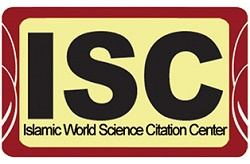A comparative investigation on different measures to mitigate metro trains induced vibrations from the aspects of Resource, Propagation path, and Receiver
DOI:
https://doi.org/10.59615/ijie.3.2.8DOR:
https://dorl.net/dor/20.1001.1.27831906.2023.3.2.2.0Keywords:
Metro Trains, Vibration Reduction, Vibration Source, Propagation Path, Adjacent BuildingsAbstract
Preservation of historic buildings is a main challenge in the civil engineering field. One of the main concerns about this subject is to be sure of environmental effects like noise and vibration on monuments. To overcome these problems, a wide range of noise and vibration mitigation measures could be applied. To reach a proper evaluation, in this paper, a detailed assessment is made on the efficiency of various vibration mitigation measures by a series of field tests and sensitivity analysis in Isfahan metro lines close to some vibration-sensitive cultural structures. The sensitivity analysis was performed in possible ranges of vertical stiffness of track superstructure materials. Results showed that vertical track stiffness equal to 5 kn/mm would lead to a 5 db reduction with regarding 4 millimeters limit of rail deflection.
Downloads
References
A. Zach, G. R. (1989). Measures against structure borne noise and vibrations: experience from projects carried out by Swiss Federal Railways (SBB). Retrieved from Utrecht, Netherlands,:
Aasvang, G. M., Engdahl, B., & Rothschild, K. (2007). Annoyance and self-reported sleep disturbances due to structurally radiated noise from railway tunnels. Applied Acoustics, 68(9), 970-981. doi:https://doi.org/10.1016/j.apacoust.2006.04.013
Alabi, B. (1992). A parametric study on some aspects of ground-borne vibrations due to rail traffic. Journal of Sound and Vibration, 153(1), 77-87. doi:https://doi.org/10.1016/0022-460X(92)90628-B
Bahrekazemi, M. (2004). Train-Induced Ground Vibration and Its Prediction. (Doctoral thesis, monograph). Byggvetenskap, Stockholm. Retrieved from http://urn.kb.se/resolve?urn=urn:nbn:se:kth:diva-3696 DiVA database. (1005)
Bonin, G., Cantisani, G., M, C., Loprencipe, G., & A, P. (2007). Railway traffic vibrations: generation and propagation - theoretical aspects. Paper presented at the 4th INTERNATIONAL SIIV CONGRESS, PALERMO (ITALY).
British Standards, I. (1990). Evaluation and measurement for vibration in buildings. Part 1, Guide for measurement of vibrations and evaluation of their effects on buildings. Milton Keynes, England: British Standards Institution Milton Keynes, England.
Dawn, T. M., & Stanworth, C. G. (1979). Ground vibrations from passing trains. Journal of Sound and Vibration, 66(3), 355-362. doi:https://doi.org/10.1016/0022-460X(79)90852-6
Degrande, G., Schevenels, M., Chatterjee, P., Van de Velde, W., Hölscher, P., Hopman, V., . . . Dadkah, N. (2006). Vibrations due to a test train at variable speeds in a deep bored tunnel embedded in London clay. Journal of Sound and Vibration, 293(3), 626-644. doi:https://doi.org/10.1016/j.jsv.2005.08.039
Eng, I. C. (2006). Isfahan metro superstructure design. Retrieved from
Eng, P. C. (1998). Esfahan Mass Rapid Transit System,Volume III,Appendices B& I. Retrieved from
Eng, Z. C. (2001-2005). Geotechnical Investigations Results, Esfahan Metro Project (21 Report). Retrieved from
Eng, Z. C. (2009). Report on Environmental Measures Taken for Protection of the Chahar-Bagh Historical Boulevard Properties. Retrieved from
Gupta, S., Liu, W. F., Degrande, G., Lombaert, G., & Liu, W. N. (2008). Prediction of vibrations induced by underground railway traffic in Beijing. Journal of Sound and Vibration, 310(3), 608-630. doi:https://doi.org/10.1016/j.jsv.2007.07.016
HILLER, D. M., HOPE, V. S., BS, & TRL. (1998). GROUNDBORNE VIBRATION GENERATED BY MECHANIZED CONSTRUCTION ACTIVITIES. Proceedings of the Institution of Civil Engineers - Geotechnical Engineering, 131(4), 223-232. doi:10.1680/igeng.1998.30714
Hood, R. A., Greer, R. J., Breslin, M., & Williams, P. R. (1996). THE CALCULATION AND ASSESSMENT OF GROUND-BORNE NOISE AND PERCEPTIBLE VIBRATION FROM TRAINS IN TUNNELS. Journal of Sound and Vibration, 193(1), 215-225. doi:https://doi.org/10.1006/jsvi.1996.0261
Howarth, H. V. C., & Griffin, M. J. (1988). Human response to simulated intermittent railway-induced building vibration. Journal of Sound and Vibration, 120(2), 413-420. doi:https://doi.org/10.1016/0022-460X(88)90453-1
Knall, V. (1996). RAILWAY NOISE AND VIBRATION: EFFECTS AND CRITERIA. Journal of Sound and Vibration, 193(1), 9-20. doi:https://doi.org/10.1006/jsvi.1996.0240
Kuo, K. A. (2011). Kirsty Alison Kuo, Vibration from Underground Railways:” Considering Piled Foundations and Twin Tunnels”, a dissertation submitted for the degree of Doctor of Philosophy September 2010. (Doctor of Philosophy (PhD)). University of Cambridge,
Kurzweil, L. G. (1979). Ground-borne noise and vibration from underground rail systems. Journal of Sound and Vibration, 66(3), 363-370. doi:https://doi.org/10.1016/0022-460X(79)90853-8
Okumura, T., Takewaki, N., Shimizu, K., & Fukutake, K. (1992). Dynamic response of twin circular tunnels during earthquakes. NIST Spec Publ, 840, 181-191.
R. Wettschureck, U. J. K. (1985). Insertion loss of ballast mats. Acustica (58 ), 177–182.
Sadeghi.Javad, E. M. H. (2011). Investigation on Possible Damages of Construction and Operation of Isfahan Metro to Adjacent Monumental Structures (Report No. SRE-14908). Retrieved from
Schillemans, L. (2003). Impact of sound and vibration of the North–South high-speed railway connection through the city of Antwerp Belgium. Journal of Sound and Vibration, 267(3), 637-649. doi:https://doi.org/10.1016/S0022-460X(03)00729-6
Transportation Research Board-National Academies of Sciences, E., Medicine. (2010). Ground-Borne Noise and Vibration in Buildings Caused by Rail Transit. Washington, DC: The National Academies Press.
Vadillo, E. G., Herreros, J., & Walker, J. G. (1996). SUBJECTIVE REACTION TO STRUCTURALLY RADIATED SOUND FROM UNDERGROUND RAILWAYS: FIELD RESULTS. Journal of Sound and Vibration, 193(1), 65-74. doi:https://doi.org/10.1006/jsvi.1996.0246
Wettschureck, R. (1995). Vibration and Structure-borne Noise Insulation by means of Cellular Polyurethane (PUR) Elastomers in Railway Track Applications. Rail Engineering International, 24(2).
Wettschureck, R. (1997). Measures to reduce structure-borne noise emissions induced by above-ground open railway lines. Rail Engineering International, 26(1), 12–16.
Wilson, G. P., Saurenman, H. J., & Nelson, J. T. (1983). Control of ground-borne noise and vibration. Journal of Sound and Vibration, 87(2), 339-350. doi:https://doi.org/10.1016/0022-460X(83)90573-4
Xia, H., Cao, Y., De Guido, R., & Geert, D. (2007). Environmental problems of vibrations induced by railway traffic. Frontiers of Architecture and Civil Engineering in China, 1(2), 142-152. doi:10.1007/s11709-007-0015-1
Xiaojing Sun, W. L., Dawen Xie , Yingxuan Jia,. (2008). Vibration impacts on adjacent sensitive buildings induced by metro trains. Paper presented at the World Tunnel Congress.Underground Facilities for Better Environment and Safety, India
Yang, Y. B., & Hung, H. H. (2009). Wave Propagation for Train-Induced Vibrations: WORLD SCIENTIFIC.
Downloads
Published
How to Cite
Issue
Section
License
Copyright (c) 2023 Mohammad Hasan Esmaeili

This work is licensed under a Creative Commons Attribution 4.0 International License.










